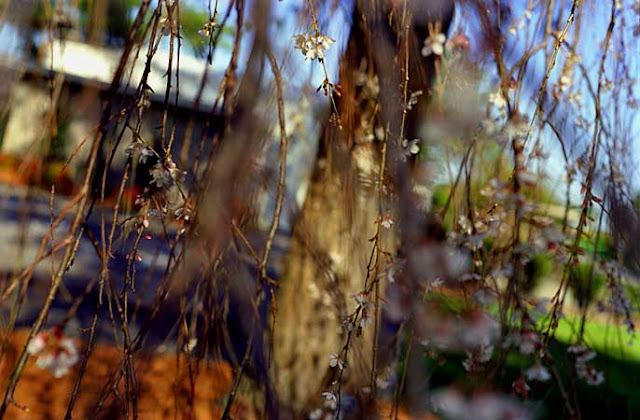
new update 7-23-13
I am still learning about blogging and just entered these property words (had no clue I was supposed to do that) for the image.
......next, cycle, wheel, in-synch, "in step", synchronicity, wheel of life, life cycle,......on so on
I am thrilled this image brings so many words to me, it is a special and very rare image, I would be blessed by the universe to have 10-15 of its strength be made through me in 30 yrs. Yes, made through me, as an antenna, a vehicle, an instrument being played and so on.
Ralph Gibson has hinted at similar things in recent years, as has Paul Caponigro many moons ago, do any of you guys or gals ever get the feeling something else is helping with your best work? I am not talking religion here (not my cup of tea), but spirituality, meta physics and the like. You can just tell me to stop with the voodoo, God crap, its all luck. Now I have always had a bit of a spiritual bent, so maybe I naturally think in that fishing tank.
Older parts of post:
What kind of thoughts I find myself pondering as I study this image:
Does a universal source organize such an event? Who or what made this "image-event"? Would the 2 men have stayed on their personal walking courses had I not been working that day in that particular spot (precise to the inch), not to mention the exact point in linear time? Is there such a thing as a "Metaphysical Vector" or Vectors? All the endless chances for this one event to not occur makes me question who or just what is it that really makes art? Even after 30+ years of picture making I am still mostly baffled.
This image fascinates me. The image is a departure from my primary body of work (smallish urban landscapes emphasizing abstract qualities of light and form), in that people are part of the landscape and the image's success is directly dependent on their inclusion. Although I have long enjoyed Cartier-Bresson's (master of the decisive moment) work, my fine art photography had remained mostly unpopulated by people until about 2005. What stimulated my interest in working in such a manor is my time spent doing journalistic style wedding photography from 1996-2006. This image simply would not exist had I not developed a sense of timing for and interest in capturing people in motion. The stimulus provided by my journalistic style weddings are part of a story called “Paying the bills”.
I hope people who have less experience looking at visual art have looked deeply into this image's picture space and unraveled it's mystery for themselves. If you have not discovered it's magic I certainly encourage a deeper more concentrated look at it much larger (click with cursor) before reading further. My favorite book that helped teach me how to see more deeply was my professor Wally Dreyer's 102 text book choice “Looking at Photographs” by John Szarkowski. I cannot recommend it enough for people interested in developing deeper visual skills and much greater joy looking at their visual world.
A more concentrated look into the image will reveal a more transcendent image which should stimulate people's thoughts as to how such things happen. For me this type of image makes me ponder just who or what gets credit for such images? Where do the images come from? How do such things happen or do they even happen if one was not present to witness or record such? I will try to open a discussion of that matter in an entry called "synchronicity and photography” at a latter date.
For now I will point out the crucial stuff some viewers may have missed and wait for my poet/painter friend Karl Watson's commentary on this and two other images. Within the cycle wheel there are two men, one younger and one older walking in opposite directions. To me the sign or symbol in the image (the cycle wheel) should point, lead or remind people of their knowledge if only faint of the wheel or cycle of life. The recognition of a common symbol (the circle) is certainly not a stretch for most trained people but also easily revealed to others who have learned how to observe things more slowly and deeply. There is no big mystique here, no hard to understand art words, just the simple practice of patient observation and the knowledge you are not looking at an image designed to impart a single simplistic message. Lastly, both men's posture, the bending of their legs and the angle of their shoes are virtually identical. There are more visual coincidences occurring in this image I will leave for you to discover.
Like spirituality, viewing and creating art for me involves looking more deeply and beyond surfaces. This is completely unlike the looking and quick analyzing of things in our fast paced world, it is much more akin to meditation where one strives to clear one's mind of all the unnecessary mental chatter the mind provides. Think of the mental state desired being similar to the sports term “being in the zone”. Not only athletes but also artists and musicians work to employ such a mental state on their journeys as well. People who get strong fulfillment from visual art employ knowingly or unknowingly a similar mental state when they do their looking.
Two other images where the Gods of photography or synchronicity pulls it altogether for the image maker.
I sensed a
good composition with some strong triangular energy, moved to a camera
position I thought might work and clicked. The key here is I sensed,
moved, photographed. That has to be done thousands and thousands of
times to make great images. I have been trained, I trained, and continue
to train (by studying images often, making images often), but....
It
is hard to take credit for the amount of synchronicity that organizes a
photograph way more complex, involving, resolving and fascinating than I
could possibly fully anticipate and comprehend before or as I click a
shutter button. In next or prior 1/500 of a second, or my body in a
different position not to mention camera positions all the beautiful
math that makes this image work collapses like a particle in a collision.
Our minds and eyes make composites of details and make all sorts of
chemical and mental short hand before we see what we think we see before
us. How many triangles are in the image, which ones hold it together
which ones are icing, how does the picture work, think about it study it
and you have begun to learn a great joy
you
will not for get it is like riding a bike once you train yours eyes and
mind they will always stay visually enlightened. If when trying to
enjoy an image and it seems hard quiet the mind be present.
A
good photograph can be enjoyed like a good page in a novel by a
favorite author, where you might re-read certain parts or sections
because they sing or resonate so well for you. This is how one begins to
learn how to look at images, you read them - all the parts, you do not
skip sentences. If parts of that page or section of a book connect for
you, you reread them then because you know you won't find the page
later, or will not have time. Two more images on a similar wavelength.




